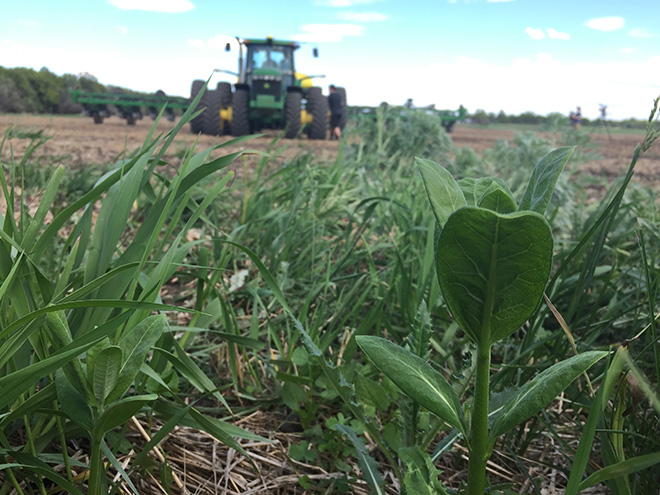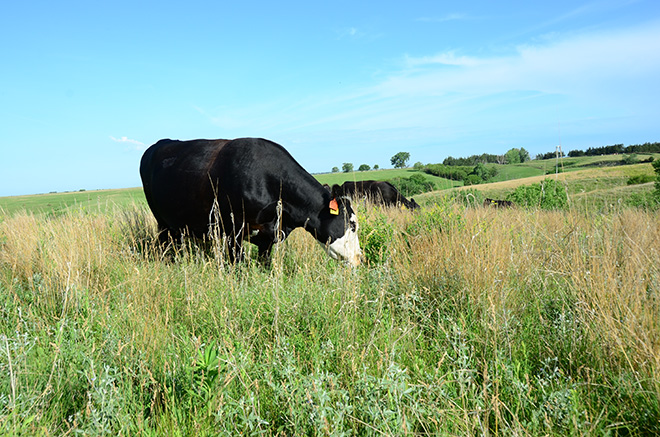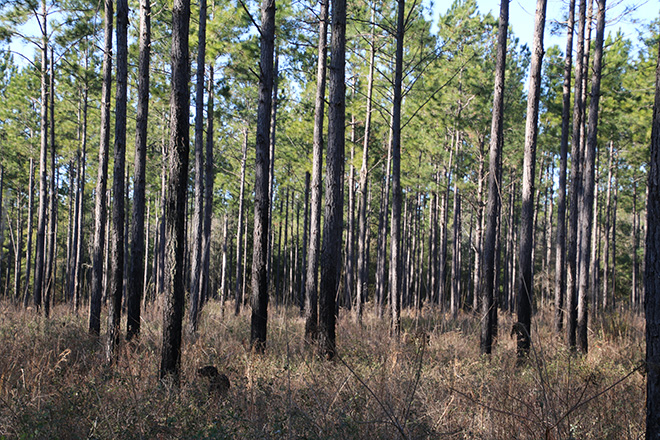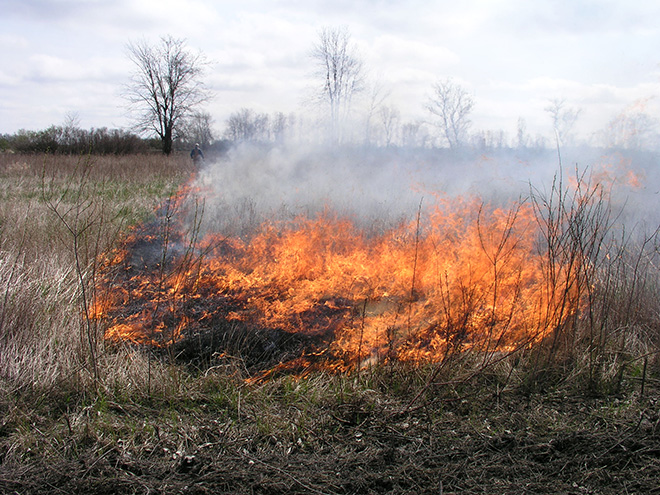By Kelly Bostian
“The rock example” is the go-to story for Jessica McGuire when people ask what Quail Forever’s role in Working Lands for Wildlife is all about.
As Working Lands Program Coordinator she cautions that it’s about a whole lot more, but the story of the bobwhite on a rock is emblematic.
It starts with a landowner in Georgia’s Baker County who knew he wanted to improve the productivity of his place and make use of some old pine timber but she said he balked at the suggestion he consider making improvements through the bobwhite quail program.
“It just seemed like too much to him,” McGuire recalled. “He didn’t want to mess with wildlife because that felt complicated and mostly because, like he said, ‘there are no more quail here.’”
Looking back now the landowner is a friend and she jokes about how they finally got things going.
“I was asking him about the programs for two years and I think he finally just got tired of me bothering him,” she said. “We finally kind of bet him that if he did the work the quail would come back. We never guarantee that but we kind of made a friendly bet with him anyway.”
With Environmental Quality Incentives Program (EQIP) funding through the National Resource Conservation Service and a WLFW land management plan they went to work. The old pine stands planted decades earlier on the south central Georgia farm got a good thinning and prescribed burns cleaned up the understory, she said.
“He got a great burn on there and two years later the ground cover was coming back great and, sure enough, I was in the truck with him one day running guys back and forth between the tractors and I said, ‘there’s your quail right there,’” she said.
He didn’t believe her. “We stopped and he looked and sure enough there was a bob singing on top a rolled-up corner stone right there on his property,” she said.

A growing way of doing things
The Baker County farm is just just one example of many playing out across southern and eastern states where Farm Bill funding and a National Fish and Wildlife Foundation grant have taken Quail Forever cooperation with USDA-NRCS and state wildlife departments to new levels since 2018, McGuire said.
Cooperative efforts put more biologists’ boots on the ground and created more upland habitat while improving both agricultural and forestry production, according to Quail Forever Field Operations Director Tim Caughran.
The USDA-NRCS Working Lands money combined with the Foundation grant that funded 15 biologist positions across eight states for three years led to creative partnerships. Programs are active in New Jersey, Ohio, Georgia, North Carolina, South Carolina, Mississippi, Arkansas, and Missouri. Alabama and Texas positions are to be added soon and perhaps more states are to come with future funding, he said.
“Quail Forever has been around now for more than 15 years and during that time period, the past few years with Working Lands we have been able to do more for quail than we could in the first 12 years,” he said. “It’s been a great fit because the landowner has the incentive and we can provide the expertise with biologists.”
The program also is flexible. There is no cookie-cutter approach so it plays out a little bit differently in each state and on each property. State programs vary depending on the background of each state’s NRCS offices and existing programs state wildlife departments might bring to the table, but Caughran said a total of roughly $5 million has gone into the effort—including matching funds from state agencies and state Quail Forever chapter fundraising.
“The cool thing about this is it helped kick-start positions in some of those states and now you see bigger investments from the states’ NRCS offices and wildlife departments,” he said. “We’re looking forward to continuing those positions, getting more buy-in and expanding to more states. That’s the goal.”

It ain’t your daddy’s CRP
Hunters and others who have watched habitat trends immediately think “Conservation Reserve Program” when it comes to Farm Bill funding but Caughran said the Working Lands program is opening eyes and bringing in more interest since it began in 2018.
Where CRP programs take land completely out of production with compensation for the landowners, property in Working Lands programs remains productive, often with a goal of making it even more profitable, he said. Word is spreading and it seems to be good. Recently more than 300 participants logged in for a virtual CRP workshop that featured Working Lands Program information, Caughran said.
“This is a Farm Bill program that helps people create habitat on their property as a byproduct of the way they manage and how they keep the land in production,” he said.
In layman’s terms, it’s a partial step back to the way farms and forests were managed in the 1960s and ‘70s, when farming wasn’t as large-scale, equipment was less powerful, and fields were not as “clean,” he said.
The new-improved old way of doing things uses technology steers the ship to maximize production while keeping the best of “the old days. "Precision Agriculture can help farmers identify acres where they actually lose money, or break even, in row crops. Rotational grazing practices likewise can put more pounds on beef while boosting soil health and water quality. Forested lands can produce more timber, and more birds and other wildlife as well.
And it’s not all just about quail, he said. “Quail are a big environmental indicator species so if your doing things well and you do have quail you likely have a lot of other good things going on too, good water quality and soil health and you’re doing a lot more things right for more than just that one species,” he said.

Bringing them in
Biologists have developed plans for landowners with thousands of acres of timber or tens of acres of pasture. Large or small, it all counts in rebuilding the patchwork of habitat quail need. Wide gaps in fragmented habitat become too much for quail but the Working Lands program holds new potential to create connected parcels as word spreads through the neighborhood. The result provides the birds with a string of small islands, rather than a larger one here and another one 10 or 20 miles distant.
Nick Schell, NRCS state biologist for Ohio, said that state’s model farm is a 100-acre parcel in Highland County, in the south central part of the state. Just under 20 acres of that 100 was converted from grazed fescue to native warm-season grasses like big bluestem, Indian grass and switch grass, subject to rotational grazing.
“We got lucky because this couple bought this farm in retirement and they already had cattle and it was about the same time we launched the program,” he said. With some state agency and Quail Forever help it took off. It also helped that a wildlife management area not too far away held wild quail that likely would appreciate some new territory.
Native grasses were established with the help of herbicides to knock back the stubborn fescue. Native clovers and legumes were worked into the mix. Some “edge softening,” with hedgerow plantings, also created edge habitat between the woods and the grazing lands on the farm.
“They had improved weight-gain for the cattle and it created needed habitat,” he said.
Neighbors picked up on the success and they are getting into the program. Ohio has 15 sites in operation now, he said.
“We’ve had field days out there with 110 people showing up,” Schell said. “Once people see the weight gains and the increased haylage and the secondary benefits, interest really grows.”

And so it grows
That neighbor-to-neighbor spread helps quail as fragmentation ebbs. The examples next door also help more people see that good habitat management isn’t rocket science and that there is value these new practices, McGuire said.
“Somewhere along the way we made the idea of wildlife management seem really complicated to people,” she said. “There are some places where it’s more of a challenge because we ruined the ground, but even then in a lot of places some small changes can make a big difference.”
Many properties have absent landowners that simply don’t realize help is available to make fallow lands productive. Some large parcels are left to heirs who just never knew what the parents or grandparents used to do, or they’ve forgotten about those acres of pines they planted 20 or 30 years ago. They just need a plan to follow, she said.
“If you build it they will come,” McGuire said. “We can’t guarantee it, but it can happen. A lot of landowners think it’s just too late but that’s something that can change.”
She’s made a believer out of at least one Georgia farmer with a bobwhite on a rock.
“He just called the other day asking about timing for burning again and I told him he has a plan,” she said. “He said he’s had the plan sitting on the dashboard of his truck so long it’s faded out. ‘We’ll get you a new one,’ I told him. That’s a lot of what it’s about too, building relationships is how we can get birds back.”
Learn more about the USDA-NRCS Working Lands for Wildlife program at nrcs.usda.gov.
Kelly J. Bostian is a freelance outdoors writer in Tulsa, Oklahoma.
This story originally appeared in the Spring 2021 issue of Quail Forever Journal. Liked it and want to see more? Join Quail Forever today!